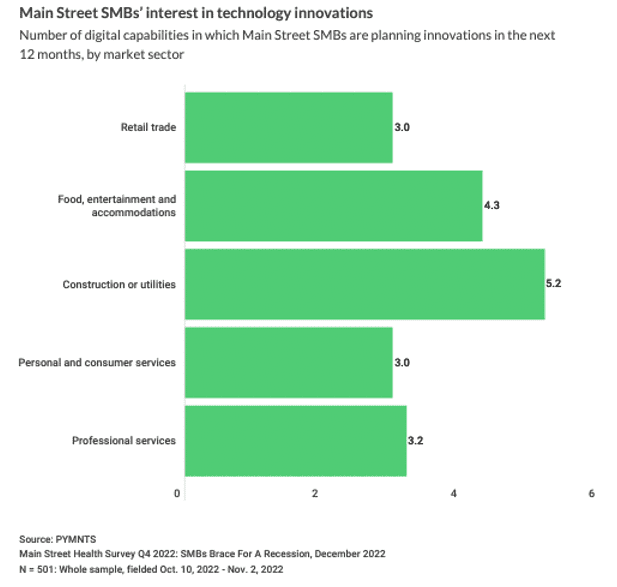
Even small changes may reap cost-cutting rewards for small businesses seeking to weather 2023’s projected rocky road.
Economic news over the past few days has felt grim. Grocers are seeing even their higher-income customers buy less, and interest rate hikes are influencing the shopping behaviors of the same demographic. Discretionary items such as smartphones are also experiencing record sales slumps.
These developments come as consumers overall are still spending, generally with credit, but that trend could reverse as disposable personal income growth rates slow. Some major lenders have already announced that they’re setting aside extra funds due to possible loan loss amid fears of a coming recession.
PYMNTS’ “Main Street Health Survey Q4” found that many small- to medium-sized businesses (SMBs) across all sectors reported slimmer margins during the 12 months preceding October. Professional service firms were hardest hit, with 70% of sector businesses reporting decreased profit margins, up from 63% in July. Up until recently, price markups had been the primary strategy to fend off inflation’s effects, with 31% of firms in October saying this was the most important action they were taking.
As consumer spending slips, some SMBs may consider turning to other options, such as investments in cost-cutting technologies — including automation platforms. However, PYMNTS’ research found that Main Street SMBs’ current interest in such innovations vary across sectors.

These businesses, which generally run on tighter margins, are in a particularly tough spot as they search for cost-cutting strategies that won’t drive their customers and clients away. Sectors that have so far lagged or been resistant to modernizing any part of their business systems may want to consider some level of innovation investment and adoption as part of their long-term growth strategy. While most firms likely already use some digital channels for their processes, there are other areas SMBs — and not just SMB retailers — may automate and see possible revenue-saving results.
For logistics firms, there are solutions such as the partnership between FourKites and Cargonerds to add real-time supply chain visibility to Cargonerds’ digital platform. This would augment the platform’s already offered features that include quoting, booking, tracking and reporting capabilities. Automating all those services can save revenue via reduced personnel time in manual input or reconciliation. Last August, Raft (formally Vector.ai) added payment integrations to its freight logistics productivity platform, enabling forwarders to continue automating their systems, free up personnel to focus on other issues and pay invoices faster.
FinTechs such as Nimbello offer accounts payable (AP) automation solutions to help SMBs across sectors. The cloud AP software provider’s newest platform is meant to help businesses scale their finance operations, assist their vendor supply chain, increase efficiencies and help their customers gain spending insights.
Additionally, American Express plans to buy automation company Nipendo to assist building an end-to-end automated payments platform.
The consumer spending slowdown may prove to be a short-term bump or a much longer headwind. In either case, implementing some increased level of automation will likely help SMBs across all sectors start saving now without worsening the situation.